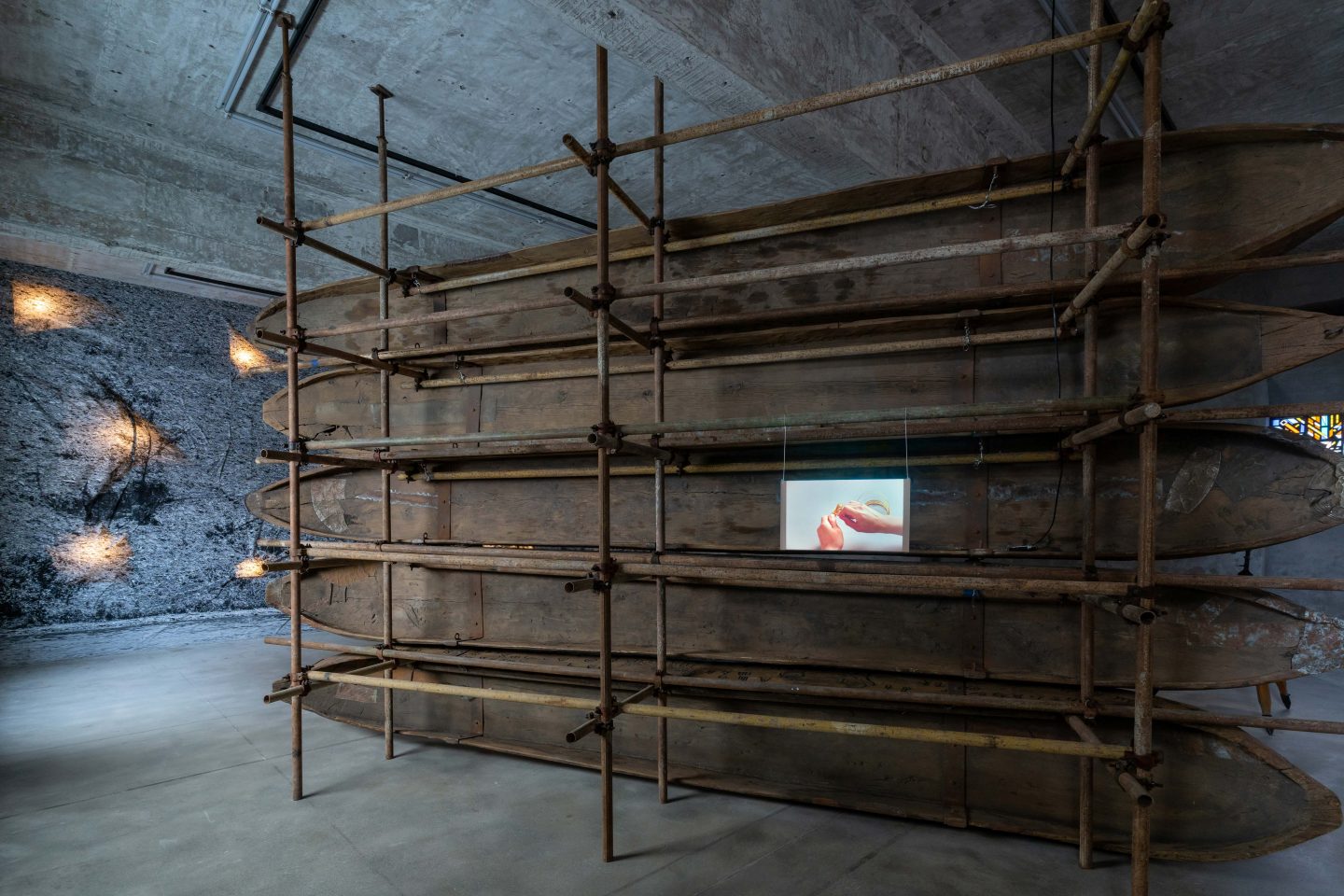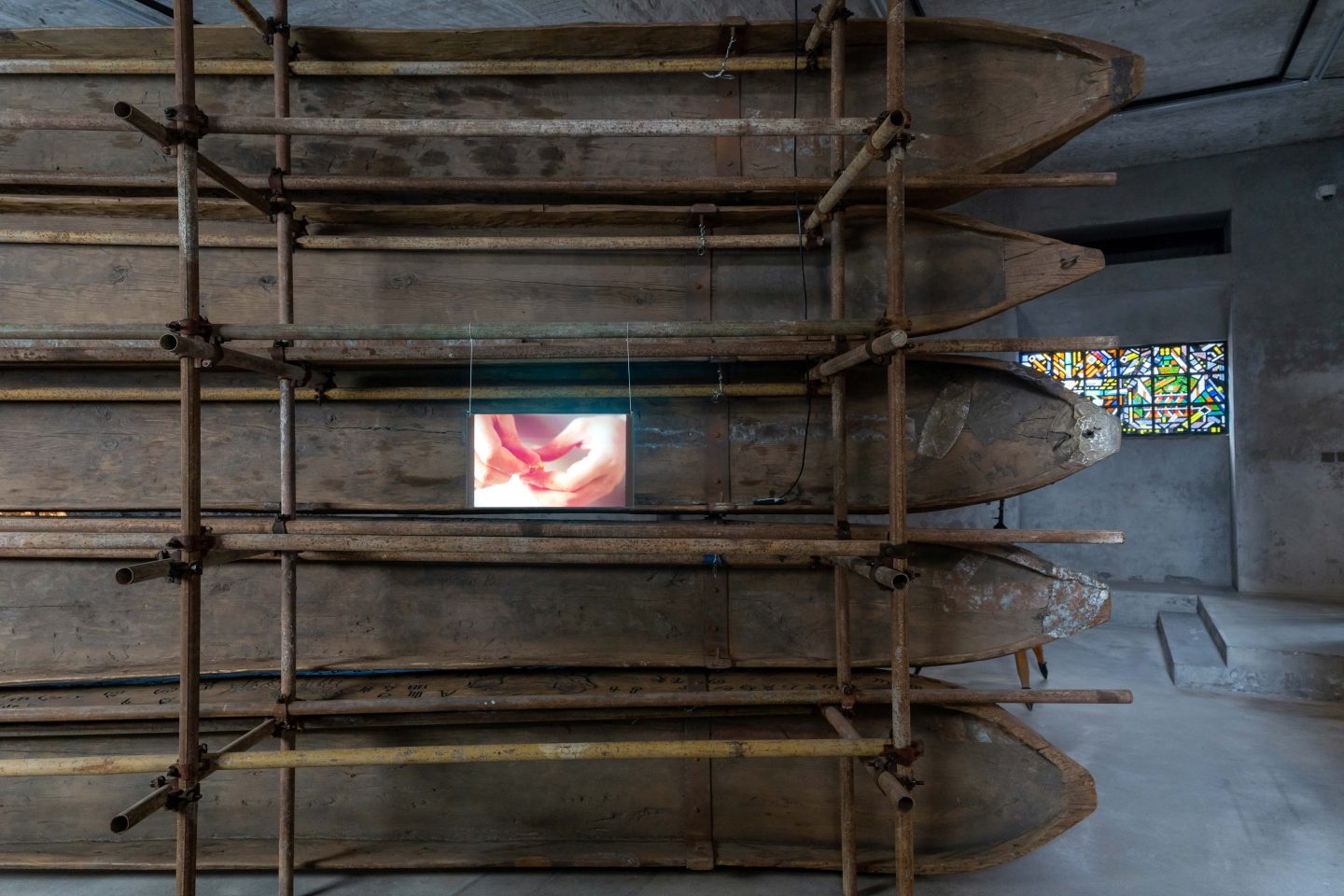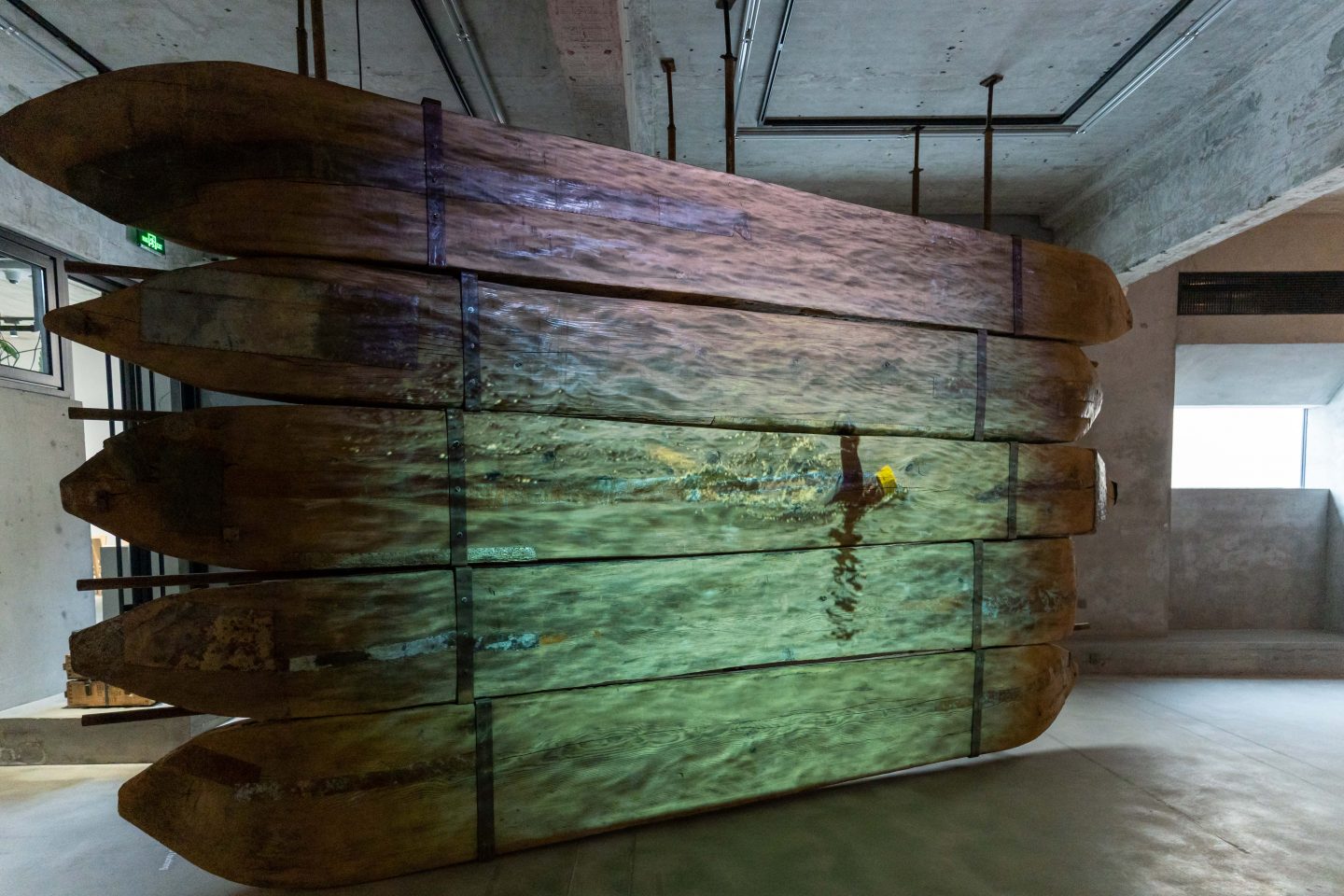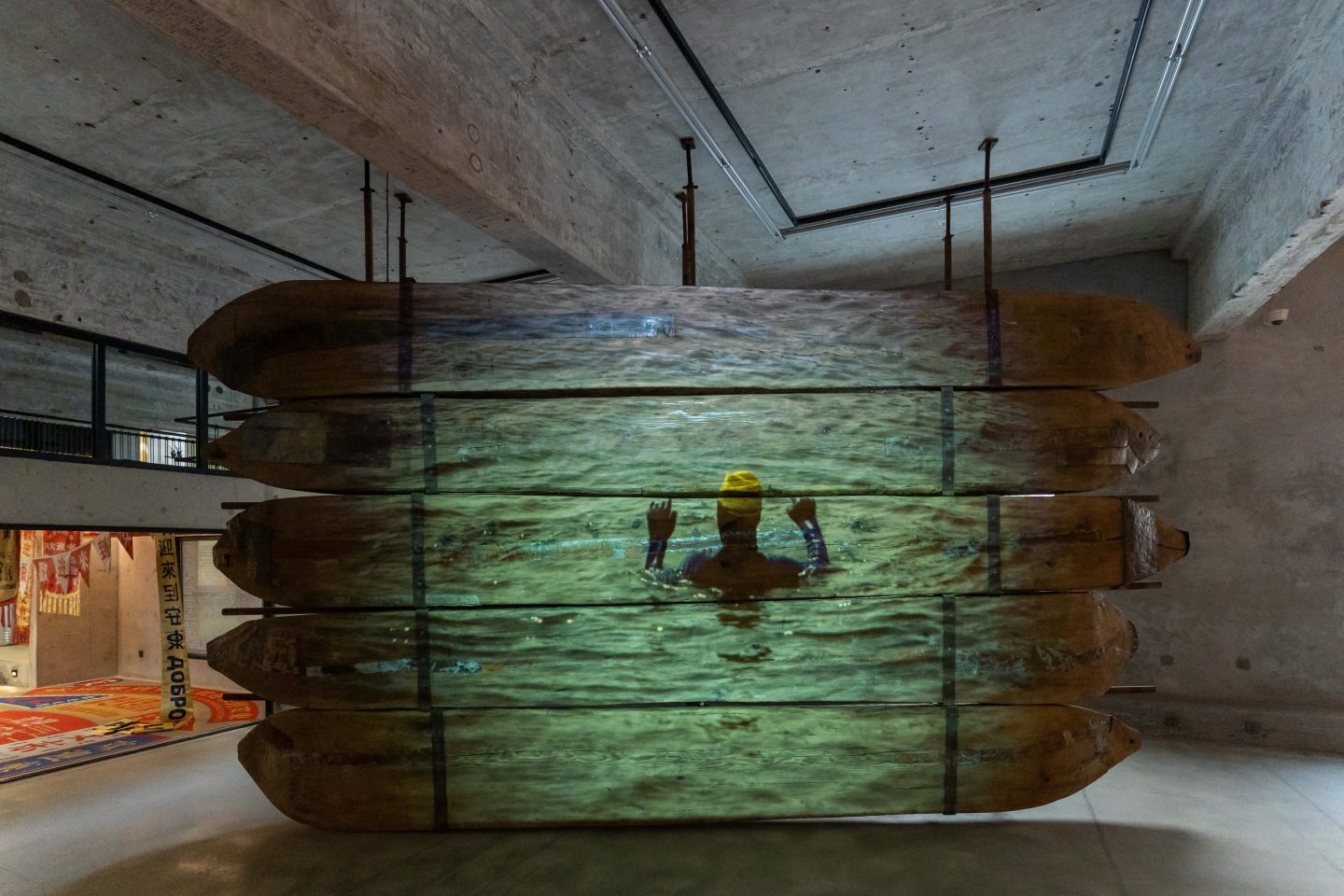From Antung to Dandong: Rafts, Broken Bridges and Passers-by on the Yalu River
Wind H Art Center
2022.3.13 – 6.5

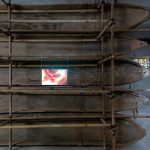
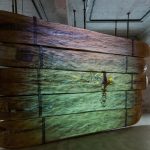
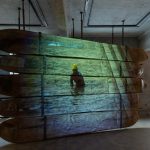
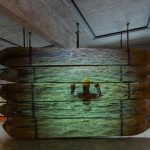
On March 12, the Click Ten Art Space will unveil its new exhibition “From Antung to Dandong: Rafts, Broken Bridges and Passers-by on the Yalu River”, focusing on “locality” and “border”. Curated by architect and artist Liang Chen, the exhibition features the works and projects by 16 artists and groups based in and out of Dandong from different perspectives. The full list of artists includes Kazuhiro Okada, He Xiangyu, Hong Xing, Jia Aili, Liang Chen, Liang Rui, Tan Zhenbang, Stylus, Wang Ningde, Yin Ji’nan, Zhang Tuitui, Zhao Liang, Gazetteer-novel collective, Drawing Architecture Studio, Sun Haiting, and Zhang Shuo. The exhibition will run till June 5, 2022.
The rich historical heritage in Dandong has made it an entry point into the intertwined space and time of the Northeast China, and also an international border fortress of multi-cultural exchange and conflict: From the Sino-Korean Plateau to the Tan-Lu Fault Zone, from the volcanic activity of the Changbai Mountains to the formation of the Yalu River, from the construction of the Great Wall of Yan during the Warring States Period to the Liutiaobian site, where is the birthplace of the Manchu Qing Dynasty, from the log rafts going downstream to the “wood city” at the estuary for timber trade; from the Sino-Japanese naval war (1894-1895) to the Russo-Japanese war (1905-1906), from the first stop of the An-Feng Railway which was constructed by the Japanese colonialist in China in 1904 to the last stop after their defeat in China in 1945, from the Yalu River Bridge that was blown up by the American army in 1950 to the critical port to North Korea after Korean War, from the name changed from “Antung (Andong)” before 1965 to “Dandong” after 1965, from the Protectorate General to Pacify the East in the Tang Dynasty to the Red East of the socialist allies, from the pioneer of trade and silk handicrafts before the founding of China to the star city of light industry after the founding of country and the rising of the internet-famous tourist city, Dandong is the center of Northeast Asia and the largest border city in P.R. China. For thousands of years, the Yalu River has seen countless passers-by. There were Han Chinese, Manchus, and Koreans in raft business, and Japanese and Russian soldiers ready to attack. There were Chinese who built the Tianhou Palace, the Temple of the God of Wealth, the Dragon King Temple, and the City God Temple; Japanese who built Shinto shrines and Buddhist temples; and Danish missionaries who traveled from afar to build churches, hospitals, and orphanages. There were Soviet and American troops on the eve of the Cold War, and also Chinese people’s volunteer army from all over the country.
The exhibition “From Antung to Dandong—Rafts, Broken Bridges and Strangers on the Yalu River” presents fiction, poetry, painting, photography, video, installation, and other media created based on Dandong by creators from different eras. It aims to present the internal view of Dandong-born creators and etic observations of “outsiders.” The exhibitors include local research groups of cultural and historical archives in Dandong, creators-in-residence who have long been concerned with local culture, as well as Japanese writers born in Antung.
…
He Xiangyu, who was born in 1986 in a small town on the border, made a series of delicate sculptures by fragments of patinated tubing and pieces of ironmongery obtained in a black market, he created several “copies” after the found objects, to re-create and haptically consider their complex and compressed sculptural forms.
All their personal histories outline the historical space of Dandong (Antung). Therefore, this exhibition presents historical facts and archives, and more importantly, hopes to assemble, reconstruct and recreate local landscapes through the artists’ unique perspectives. In addition, the exhibition miniaturizes the spatial geography of the Yalu River in the exhibition hall, trying to explore new possibilities of local studies and spatial narratives.
In recent years, the reform and opening up, nuclear tests, and the phenomenon of defectors in North Korea have gained widespread attention in society. The story near the border may seem far away from us, but it precisely outlines the territory of our motherland and the spatial scope between countries. It is the borders that define things. This exhibition is also part of the Border Project based on interdisciplinary research in art, architecture, and anthropology. As an important phenomenon in the postmodern global cultural landscape, the disparity in time and space between contemporary art originated from the modern West and the local culture is gradually dissolving, reconstructing the order and boundaries of global public culture by referencing each other. Therefore, the study of local knowledge has become necessary for understanding the specific context of contemporary knowledge generation and is an essential path for developing locally-based contemporary Chinese art in globalization. Border Project focuses on the vast local cultural resources in China, especially the borderlands at the forefront of knowledge generation and exchange. From the geographical borders, the exhibition attempt to take an interdisciplinary view to observe the boundary of culture, history, language, and social psychology, which is broader and more complex, and explore more possibilities for artistic innovation.
